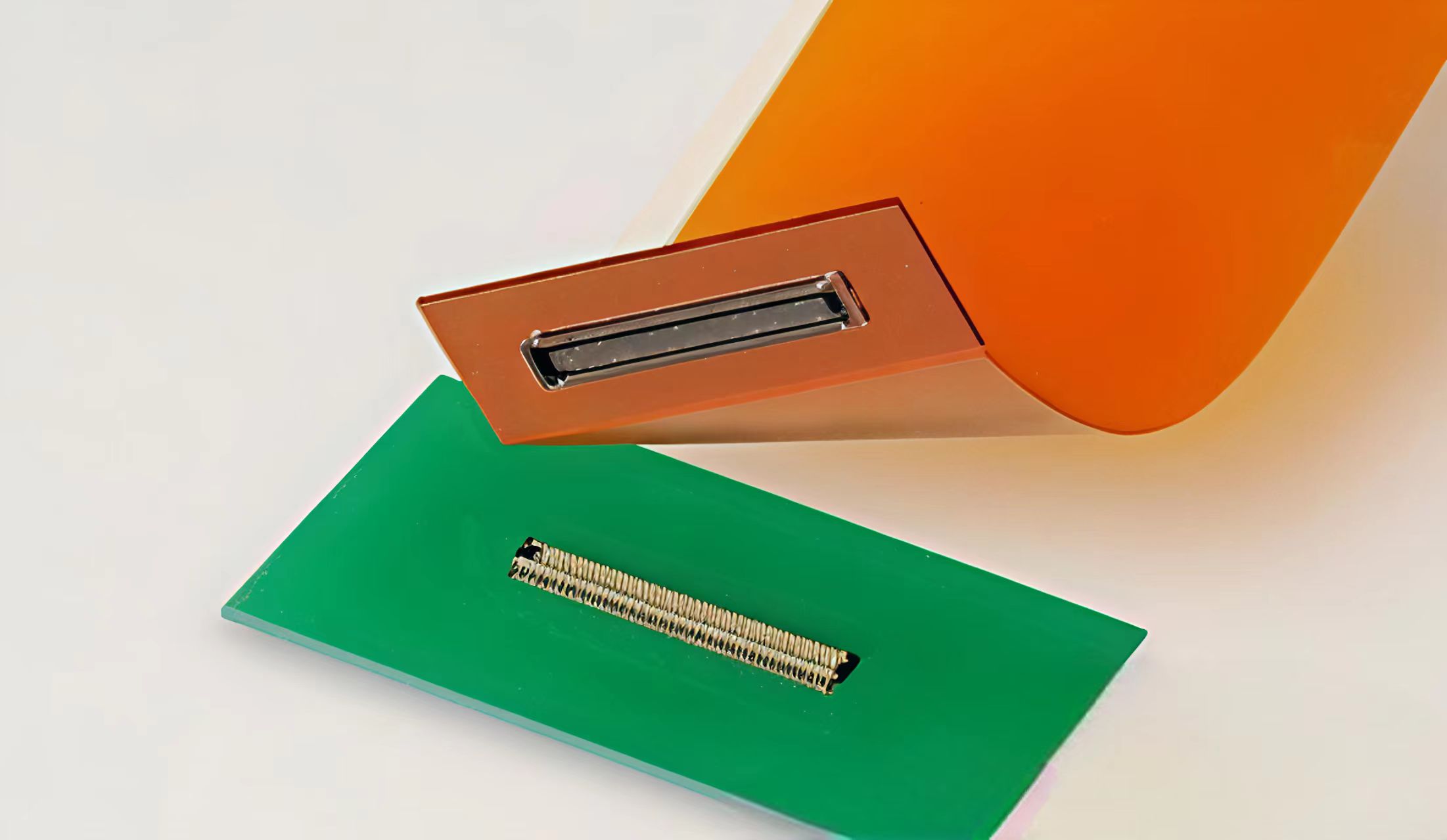Board-to-board connectors (BTB connectors) are a widely used connectivity solution. They allow signals, power, and data to be transmitted directly between two or more PCBs without the need for additional cables or wiring harnesses. This connection method not only simplifies design but also improves system reliability and compactness. As electronic products move towards miniaturization, higher density, and higher speed, BTB connectors have become an indispensable component in consumer electronics, automotive, medical, and industrial fields.
A BTB connector is essentially a miniature coupling plug and socket system that directly transmits power and signals from one circuit board to another. Unlike wire-to-board or wire-to-wire connectors, which involve wires, BTB connectors emphasize direct connection between boards. This design is particularly useful in space-constrained environments, such as smartphones, laptops, and automotive electronic systems.
The history of board-to-board connectors dates back to the mid-20th century, with the advent of the printed circuit board. The earliest PCB connections relied on simple pins and sockets, but as electronic technology advanced, connectors needed to support higher density and speed. In the 1970s, the widespread adoption of integrated circuits drove connector miniaturization. In the 21st century, with the maturity of surface mount technology (SMT), board-to-board connectors achieved smaller pitches (such as 0.35mm) and higher pin counts.
Today, many well-known manufacturers, such as Molex and TE Connectivity, offer a diverse range of board-to-board connector products. These companies utilize innovative materials and designs to meet the demands of high-frequency, high-power, and high-density applications. For example, Molex's micro-stacked connectors support data rates up to 10Gbps, making them suitable for data centers and telecommunications equipment. Standardization has also played a key role in this development, with the International Electrotechnical Commission (IEC) establishing numerous standards to ensure connector compatibility and safety.
Board-to-board connectors can be categorized into various types based on their structure, mounting method, and application scenario. Key categories include:
Stacking connectors: These allow two PCBs to be stacked in parallel, saving vertical space. Commonly found in mobile devices, they typically have a pitch of 0.5mm to 1.0mm and support multi-layer stacking. Mezzanine connectors: Similar to stacked connectors, but designed for high-density applications, they are commonly used in servers and embedded systems. They offer high pin density (e.g., hundreds of pins per square centimeter) and high-speed signal transmission.
Card Edge Connectors: One end is fixed to the motherboard, and the other end plugs into the edge of a daughterboard. They are commonly used for expansion cards, such as PCIe slots. They support hot swapping and high power transmission.
Backplane Connectors: Used in large systems, such as telecommunications switches or computer servers, to connect multiple daughterboards to the main backplane. They emphasize high reliability, vibration resistance, and high data rates (up to 100Gbps).
Fine Pitch Connectors: With a pitch of less than 0.5mm, they are suitable for ultra-small devices, such as wearable electronics. SMT mounting is the mainstream method, reducing solder joints and improving production efficiency.
Also, there are right-angle and vertical types, depending on the mounting angle; and waterproof and non-waterproof versions, depending on sealing. When selecting a type, consider parameters such as current rating, voltage withstand, ambient temperature, and vibration resistance.

board-to-board connectors
The core of a board-to-board connector is a male-female mating system: the male end (plug) typically has pins or contacts, while the female end (receptacle) has corresponding slots or holes. When the two connectors mate, the contacts establish electrical contact through mechanical pressure and spring force. Contacts are often plated with gold or tin to prevent oxidation, while the insulator is made of high-performance plastics such as LCP (liquid crystal polymer), which is heat-resistant up to 260°C.
In high-speed applications, connectors must minimize signal attenuation and crosstalk. Modern BTB connectors support transmission rates up to 56Gbps through differential pair designs and shielding. The installation process typically involves SMT or through-hole soldering, ensuring precise alignment to avoid shorts or opens.
Board-to-board connectors are widely used across nearly every electronics industry:
Consumer electronics: Smartphones, tablets, and smartwatches use fine-pitch BTBs to connect the motherboard to the display or battery module, enabling ultra-thin designs. Automotive electronics: In ADAS (Advanced Driver Assistance Systems) and electric vehicles, connectors must withstand high temperatures and vibrations, connecting instrument panels, sensors, and control units.
Medical devices, such as portable monitors and implantable devices, require high-reliability and low-noise transmission to ensure patient safety.
Industrial automation: In robotics and PLC systems, they are used for modular connectivity, supporting hot swapping for easy maintenance.
Data communications and military: In servers and aviation equipment, high-density connectors handle massive amounts of data while meeting MIL-standard durability.
In the Internet of Things (IoT) era, board-to-board connectors have also expanded into smart homes and wearable devices, driving the development of edge computing.
The main advantages of board-to-board connectors include:
Compactness: The cable-free design saves space and is suitable for miniaturized products.
Reliability: Direct connection reduces points of failure and supports thousands of mating cycles.
High performance: Supports high-frequency signal and power transmission, compatible with 5G and AI applications.
Cost-effectiveness: Low price in mass production and easy for automated assembly.
However, challenges should not be ignored. Miniaturization increases alignment challenges and susceptibility to dust and vibration. Furthermore, high-density designs can cause thermal management and electromagnetic interference (EMI) issues. Manufacturers are mitigating these board-to-board connectors issues through advanced simulation software and test standards.